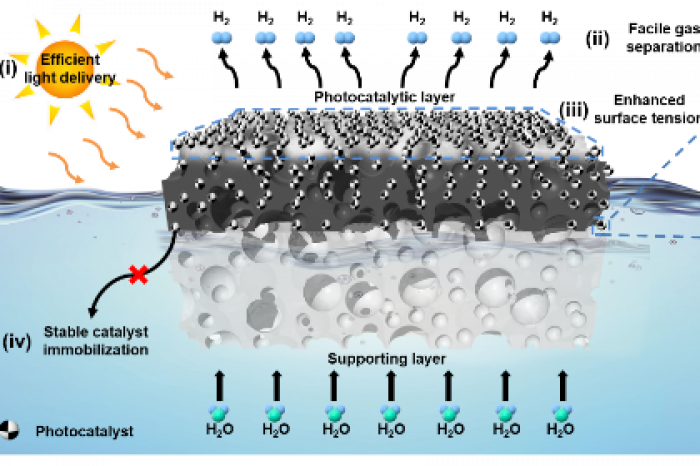S.Korea's IBS develops floatable photocatalytic platform
This new platform can produce green hydrogen in oceans, rivers
By Apr 28, 2023 (Gmt+09:00)
NPS to hike risky asset purchases under simplified allocation system


UAE to invest up to $1 bn in S.Korean ventures


Hankook Tire buys $1 bn Hanon Systems stake from Hahn & Co.


US multifamily market challenges create investment opportunities


Osstem to buy BrazilŌĆÖs No. 3 dental implant maker Implacil



The Institute for Basic Science (IBS) in South Korea has developed a new ┬Āfloatable┬Ā photocatalytic platform that can produce green hydrogen from a solution of melted PET bottles in oceans, lakes and rivers.
It consists of a dual-layer structure, with an upper photocatalyst layer and a lower supporting layer, and is made up of a low-density solid material filled with gas, known as a cryo-aerogel, which reduces the density of the catalyst itself.
The platform can operate for more than two weeks in harsh seawater environments containing various microorganisms and suspended solids with minimal performance degradation.
Hydrogen is typically produced using conventional methods that require a lot of energy and emit large amounts of carbon dioxide. In contrast, photocatalytic-based hydrogen production uses solar energy and emits no greenhouse gases.
However, commercialization has not yet been achieved due to the economic inefficiency of powder-shaped photocatalysts that must be made into film or panel shapes, and separate containers and devices for releasing hydrogen outside the water are required for operation.
The IBS research team's new gel-type photocatalyst platform floats on water, minimizing the reverse reaction where hydrogen is converted back into water and reducing the loss of product, while efficiently using solar energy without scattering light.
The platform can also be easily produced on a large scale and has achieved a hydrogen production rate of approximately 4 liters per hour using a 1 square meter hydrogel catalyst through solar power, which is the world's highest performance level.
The research results, titled "Floatable photocatalytic hydrogel nanocomposites for large-scale solar hydrogen production," were published in the online version of Nature Nanotechnology, with an impact factor of 40.523.
Write to Hae-Sung Lee at ihs@hankyung.com
-
 Shipping & ShipbuildingS.Korea to allow actual construction of hydrogen-powered ship
Shipping & ShipbuildingS.Korea to allow actual construction of hydrogen-powered shipApr 05, 2023 (Gmt+09:00)
1 Min read -
 Carbon neutralityDoosan advances domestic development of green hydrogen turbine
Carbon neutralityDoosan advances domestic development of green hydrogen turbineJan 30, 2023 (Gmt+09:00)
1 Min read


